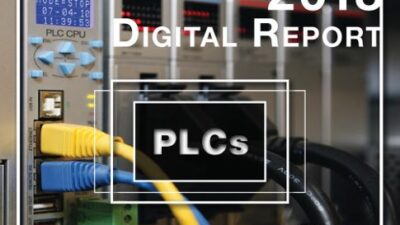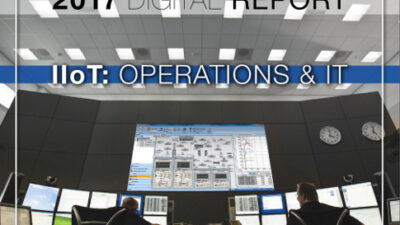Tutorial: Here's how to save time, money, and gain other benefits you may not have considered with intelligent wiring components, terminal blocks, and distributed I/O devices. Also see a video.
Milwaukee, WI – Jungle isn’t a word that should be associated with the plant floor. However, many electrical contractors are facing the reality that the plant floor has become just that – a jungle of wires. Although wires secure connectivity between the machinery and control devices vital to operations,an overabundance of them can inhibit productivity. Fortunately, components manufacturers and wiring solutions providers have made an effort to remedy this problem and simplify the plant floor through the development of pre-wired, intelligent and machine-mountable components.One way providers have sought to ease integration and reduce wiring is through pre-wired components. Because all wiring is stored within the component’s frame, it greatly reduces the amount of external wiring needed between machinery and also saves contractors time during installation. Along with making installation more reliable, pre-wired components reduce the chance for a wiring-related system failure.Terminal blocks are an example of a pre-wired option that can help reduce wiring on the plant floor. Electrical contractors are realizing the benefits of the compact and robust connectivity capabilities of terminal blocks. With the ability to mount directly onto a machine or inside of a cabinet, terminal blocks are easy to configure and can fit into tight spaces. Additionally, they are designed to accommodate a number of solid or stranded wires in one terminal and in most cases, can reduce wiring time by half. The single-terminal design also allows for easier troubleshooting, maintenance or replacement.A host of terminal block styles meet the needs of specific applications. Popular styles include spring clamp, screw-type and insulation-displacement terminal blocks. Spring-clamp terminal blocks offer screwless termination technology, providing a quick and durable wiring solution. Spring-clamp blocks only require a screw driver for installation and feature clamps that do not require retightening. Screw-type blocks are perhaps the most visual of terminal blocks, serving as a single terminal for multiple wires. Insulation-displacement terminal blocks offer the fastest connection and eliminate the need to strip insulation from wires.Pre-wired components are especially beneficial when a component is needed quickly– when a line is down due to component failure. Gone are the days when electrical contractors had to spend time sifting through wires to connect the components; pre-wired components can be easily snapped on and ready to use. Within the wide-range of pre-wired component options, some solution providers even offer plug-and-play connectors and cables that replace point-to-point connections between a controller and I/O module within the control panel.Electrical contractors now have the option of using a single network to connect these pre-wired components to further simplify the plant floor. Intelligent distributed I/O devices, like terminal blocks, work well for light industrial and commercial automation environments, and can provide the single translation or conditioning needed for a connected controller. In fact, terminal blocks can be linked directly to the controller through a network located in the interior of the cabinet, eliminating the need for an I/O device inside the panel.Like pre-wired cables, distributed I/O devices help reduce panel space and can create a highly organized control center. Electrical contractors can utilize a communications port supplied by the controller and network to the communications adapter for the I/O assembly, which eliminates the need to wire from the cabinet to the external I/O device.To further maximize space, many electrical contractors are realizing the benefits of mounting these distributed I/O devices directly onto equipment. Many of these components had been previously located inside the control panel, and directly wired to a controller– also inside the panel – creating an overabundance of wires and requiring a larger panel for housing. By mounting components directly onto equipment, manufacturers can leverage as much of the production floor as possible. With additional floor space available, they have the flexibility to incorporate additional machinery or manufacturing lines into the facility for increased revenue potential.When mounted directly on machine, I/O devices, sensors, cables and other components must be able to withstand the harsh environments to which they are exposed. To extend the component lifespan, manufacturers have developed robust casings to help the components function properly in harsh environments and where excessive vibration occurs.These devices help eliminate the need for maintenance technicians to access the control panel every time a connection has to be checked or when adjustments need to be made to the wiring system. Glitches in the wiring system are easier to identify and can be corrected by snapping on another component or adjusting one of the field devices.
A
. Brian DelFosse is a product manager for
Rockwell Automation
. – Edited by Mark T. Hoske and Renee Robbins Control Engineering System Integration eNewsletter Register here and scroll down to select your choice of eNewsletters free .


